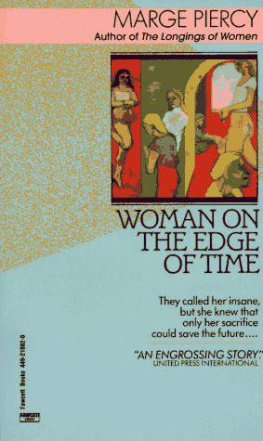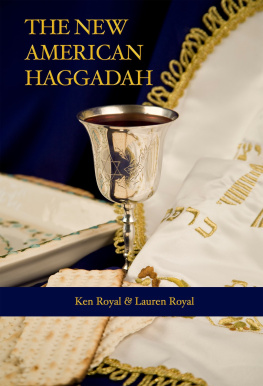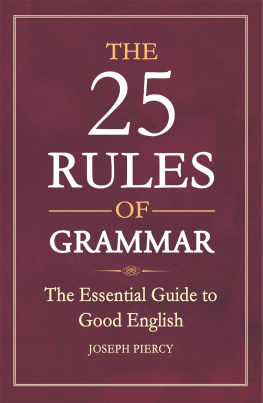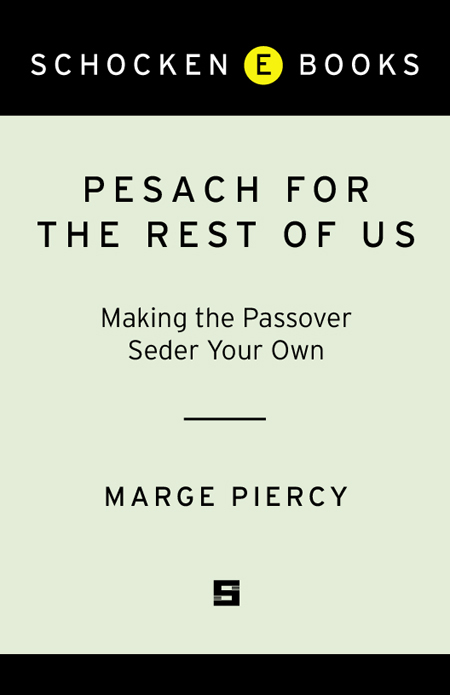Also by Marge Piercy
POETRY
The Crooked Inheritance
Colors Passing Through Us
The Art of Blessing the Day
Early Grrrl
What Are Big Girls Made Of?
Mars and Her Children
Available Light
My Mother's Body
Stone, Paper, Knife
Circles on the Water (Selected Poems)
The Moon Is Always Female
The Twelve-spoked Wheel Flashing
Living in the Open
To Be of Use
4-Telling (with Bob Hershon, Emmett Jarrett, Dick Lourie)
Hard Loving Breaking Camp
NOVELS
Sex Wars
The Third Child
Three Women
Storm Tide (with Ira Wood)
City of Darkness, City of Light
The Longings of Women
He, She and It
Summer People
Gone to Soldiers
Fly Away Home
Braided Lives
Vida
The High Cost of Living
Woman on the Edge of Time
Small Changes
Dance the Eagle to Sleep
Going Down Fast
OTHER
Sleeping with Cats, A Memoir
So You Want to Write: How to Master the Craft of Writing Fiction and the Personal Narrative (with Ira Wood), 2nd Edition
The Last White Class: A Play (with Ira Wood)
Parti-Colored Blocks for a Quilt: Essays
Early Ripening: American Women's Poetry Now: An Anthology
The Earth Shines Secretly: A Book of Days (with paintings by Neil Blaine)
For my Grandmother Hannah Levi Bunnin:
you. did everything the right way
but loved us whatever we did,
in your memory
Contents
1
What Kind, of Book Is This
and Who Is It For?
 esach is a very important holiday for me. Every year, I lead a seder with a haggadah I have been working on for twenty years. Mostly the same people come from Boston, from New Jersey, from Arlington, Massachusetts, from two miles away, and from a quarter of a milewe all gather gradually in my small Cape Cod house. Over the years, a couple and their children moved to Chile; some people tried it and it was not their kind of seder. One young woman grew up and now brings her husband. Children have been born and joined the seder. But basically we're pretty much the same core group year after year.
esach is a very important holiday for me. Every year, I lead a seder with a haggadah I have been working on for twenty years. Mostly the same people come from Boston, from New Jersey, from Arlington, Massachusetts, from two miles away, and from a quarter of a milewe all gather gradually in my small Cape Cod house. Over the years, a couple and their children moved to Chile; some people tried it and it was not their kind of seder. One young woman grew up and now brings her husband. Children have been born and joined the seder. But basically we're pretty much the same core group year after year.
Like many Jews, Pesach is my favorite holiday and the one where I find the strongest personal meaning. I came to studying it earlier than Rosh Hashanah and Yom Kippur, perhaps because it is preeminently a holiday to share with family and friends. In this little book, I will make my way through the ritual one item and one practice at a time. I am looking for a significant contemporary interpretation, rather than an emphasis on what is strictly correct or traditional. I want to encourage you to fashion your own seder in a way that speaks honestly and powerfully to you and your circle, whoever they arefamily, friends, an organization.
I often provide a historical perspective to help you choose or create a ritual that works for you. Much of what we may have been brought up with in modern Judaism in siddurs, in customary rituals of brit or bar or bat mitzvah, in holiday services or activities, was invented, worked out, haggled over, revised over many generations. You can borrow or create or combine to make a seder that works for your own groupwhether family or friends or community. Try out new things every year. Keep the parts most people love or respond to and remember. Work on the parts that seem to put people to sleep.
The book is not aimed at the Orthodox, but rather at providing an entrance for secular and religious Jews with a modern slant into a more satisfying and meaningful way to celebrate our most common celebration, the one that just about every Jew partakes in, often twice with first and second night seders. Increasingly in recent years, Jews are putting together our own haggadahs or searching out material from other haggadahs to incorporate into our own ritual. There are literally thousands of haggadahs.
Many of us remember seders of our childhood where the haggadah was read mostly or entirely in Hebrew as fast as possible, usually by the patriarch of the family or some older man assuming that role. It had the emotional content of the directions for installing a DVD recorder. For many of us, that something has always been done a certain way does not mean that is how we want to do it or the way with the most meaningful content or spiritual resonance. Furthermore, Judaism is always changing. The way we celebrate Shabbat, the various parts of the services for Friday night and Saturday morning, the expectations concerning the holiday services, every piece of what always has been or what is supposed to be was started sometime in our history and kept because it worked for people. Other usages were gradually altered or dropped. The traditional haggadah has been evolving over centuries and adding some passages while dismissing others.
A commonly repeated statistic is that 90 percent of American Jewsno matter whether they are bagels and lox Jews or religious in some fashion or just in search of some sort of spiritualityattend at least one seder every Passover. That seder may be the only Jewish ritual a person engages in all year long and therefore the one experience that can confirm and give meaning to that person's Jewish identity. I am attempting to make elements of the haggadah and the seder rich with contemporary meaning so that the bored or deracinated adult would have an answer to, Why do we go to all this bother every year? or, Why do I feel bereft if I have no seder to attend?
Some people come to the seder wanting a spiritual experience. They want, not rote prayers or muttered blessings, but words and practices that move them, that awaken something in them that connects them to a sense of holiness and community. Some people come to the seder wanting to reconnect with a sense of the history of our people and to find something pertinent and engrossing in our identity as Jews. Some people come to the seder wanting to link up with the tradition of liberation in Judaism. Some people come just to eat, and that's okay too, as there is plenty of food for the stomach as well as the spirit. At Pesach we rededicate ourselves to what we cherish and what we find meaningful in our Jewish identity. We see ourselves as part of a people, historically and in the present. It is a time to remember that we as a people were once slaves and that people are enslaved in all eras and in many different ways. Slavery, whether literal or metaphorical, is very much with us today.
Thus inevitably Pesach has a political underpinning as we deal with issues of oppression and freedom, of revolt, of daring to change. For some, it is a time to rededicate ourselves to tikkun olam, the repair of the damaged world. A time to remember our thirst for justice and equality and to be inspired to resume the great work that will never be finished. Because like all Jewish holidays, Pesach has a seasonal reference, seders can also touch on ecological destruction and rebuilding. There can be an environmental aspect to the seder. All the way back to the days of the Talmud, Jews have argued about which aspect of the seder is the most important, the theme of liberation out in the world, resisting oppression, becoming free and helping others in their struggles for freedom, or internal liberation, fighting the inner as well as the outer Egypt. Really, we need not choose, for one without the other is weakened.












 esach is a very important holiday for me. Every year, I lead a seder with a haggadah I have been working on for twenty years. Mostly the same people come from Boston, from New Jersey, from Arlington, Massachusetts, from two miles away, and from a quarter of a milewe all gather gradually in my small Cape Cod house. Over the years, a couple and their children moved to Chile; some people tried it and it was not their kind of seder. One young woman grew up and now brings her husband. Children have been born and joined the seder. But basically we're pretty much the same core group year after year.
esach is a very important holiday for me. Every year, I lead a seder with a haggadah I have been working on for twenty years. Mostly the same people come from Boston, from New Jersey, from Arlington, Massachusetts, from two miles away, and from a quarter of a milewe all gather gradually in my small Cape Cod house. Over the years, a couple and their children moved to Chile; some people tried it and it was not their kind of seder. One young woman grew up and now brings her husband. Children have been born and joined the seder. But basically we're pretty much the same core group year after year.